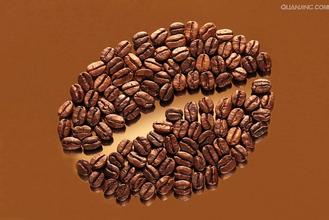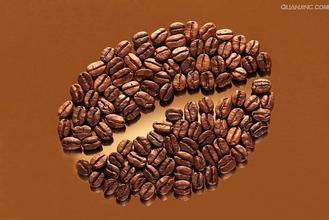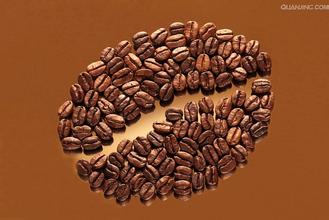Description of characteristics and flavor of Latin American coffee beans introduction to grinding scale of taste treatment
Description of characteristics and flavor of Latin American coffee beans introduction to grinding scale of taste treatment
Costa Rica (Costa Rica) aroma 3.5 minutes brightness 4.5 minutes mellow 3 minutes flavor 4.5 points aftertaste 4.5 points
Suitable for baking: if Light/Medial/City wants to show the perfectly balanced flavor of Costa Rica, it can never be baked deeply, it is recommended that the degree of City can be done, or even the beans can be added as soon as the first explosion is over, at this time the flavor and flavor will be both, close to the second explosion is the deepest limit of baking, do not enter the second explosion and waste the best coffee beans.
Costa Rican coffee is praised as "complete coffee" by many gourmets, because it is very balanced, the flavor is very clean and tight, the delicate sour taste with green apple (sometimes citrus or plum fruit), the body is tight but not thin, and the sweetness of the coffee will stay in the throat for a long time, so some people describe it as "perfectly balanced"! The best Costa Rican coffee has a chocolate flavor in its aftertaste. There are a total of 130, 000 coffee farms in Costa Rica. The most famous producing areas are Tarrzu, near the southern Pacific coast, and Tres Rios, north of San Jose, the capital. These areas have high altitude and good soil, so they have the densest planting density and stable coffee quality. Among these many coffee farms, the most famous is located in Tarasu. LaMinita Manor, which tastes as clear as a bell, the coffee at LaMinita is so good because it is careful and strict in everything from the planting of coffee trees to the handling of coffee beans. in fact, the estate produces not a small number of coffee beans a year, but very few of them are sold under the name of LaMinita, and the rest are selected to be sold only as beans from the Tarasu region. Because Tarasu is so famous, the fame of other producing areas is less known to the world, such as the Bols volcanic area and the Sanshui River producing area. The three major volcanic areas even produce excellent coffee in Orosi and so on on the north side of the Atlantic Ocean. Another problem with strong brands is that many coffees that are not produced in Tarasu are also mixed with fish eyes and pictures of Tarasu, so it is the only way to try it in person.
Guatemala (Guatemala) aroma 3.5 minutes brightness 4.5 minutes mellow 3.5 minutes flavor 4.5 points aftertaste 4.5 points
Suitable for baking: Light/Medial/City shallow roasting, city can best show the characteristics of Guatemalan coffee, too deep will reduce the fragrance of the fruit, if you like the smoky taste, you can bake close to the second burst, but still do not enter the second burst as the principle.
As the United States is deeply involved in coffee agriculture and is heavily exploited, huge North American multinational groups control most of the producing areas and produce low-altitude, low-quality coffee at very low wages. These shoddy coffees don't represent real Guatemalan coffee. In fact, Guatemala has unique planting conditions, and many producing areas have ideal altitude, soil and climate conditions, so they can produce the most complex and delicate coffee in the world. The most famous is Antigua in the volcanic area, where coffee is famous for its smoky taste and the performance of spices and fruit acids is not poor. Huehuetenango in the north is more fruity, but slightly lighter than Antigua. In addition, coffees such as Kovan, Frejanis and Kitcher also have their own characteristics, and coffee from Atitland has occasionally been produced in recent years.

Important Notice :
前街咖啡 FrontStreet Coffee has moved to new addredd:
FrontStreet Coffee Address: 315,Donghua East Road,GuangZhou
Tel:020 38364473
- Prev

Flavor description of Nicaraguan Coffee beans introduction to the region of taste production of varieties with grinding scale
The flavor description method of Nicaraguan coffee beans grinding scale varieties taste production area introduction Nicaragua Nicaragua 2005 CoE (Cup of Excellence) competition winning coffee beans, that is, the competition prize coffee beans, the output is very small, relatively rare. The appearance is very neat, and there is no need to pick and choose. It is suggested that the baking method should be baked with beans around the middle and cinnamon baking with cinnamon roast.
- Next

Introduction to Bourbon Rivida Coffee Bean Queen Manor Coffee Flavor description treatment method Grinding scale varieties
Brazilian Bourbon Rivida Coffee Bean Queen Manor Coffee Flavor description Grinding scale Variety introduction in Brazil, because the planting area of coffee is too large, the degree of mechanized production is relatively high, so people often harvest ripe and green fruits together, and there is usually no sorting process, sometimes coffee fruits are mixed with coffee branches and leaves. Not only that, Ba.
Related
- Detailed explanation of Jadeite planting Land in Panamanian Jadeite Manor introduction to the grading system of Jadeite competitive bidding, Red bid, Green bid and Rose Summer
- Story of Coffee planting in Brenka region of Costa Rica Stonehenge Manor anaerobic heavy honey treatment of flavor mouth
- What's on the barrel of Blue Mountain Coffee beans?
- Can American coffee also pull flowers? How to use hot American style to pull out a good-looking pattern?
- Can you make a cold extract with coffee beans? What is the right proportion for cold-extracted coffee formula?
- Indonesian PWN Gold Mandrine Coffee Origin Features Flavor How to Chong? Mandolin coffee is American.
- A brief introduction to the flavor characteristics of Brazilian yellow bourbon coffee beans
- What is the effect of different water quality on the flavor of cold-extracted coffee? What kind of water is best for brewing coffee?
- Why do you think of Rose Summer whenever you mention Panamanian coffee?
- Introduction to the characteristics of authentic blue mountain coffee bean producing areas? What is the CIB Coffee Authority in Jamaica?

